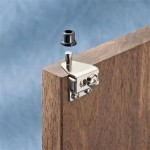How to Mirror iPhone to Any TV
Mirroring an iPhone's screen to a television allows users to enjoy photos, videos, games, and other content on a larger display. This functionality provides a more immersive and shared viewing experience. Several methods exist for achieving this, catering to varying TV setups and user preferences.
1. Using AirPlay with an Apple TV or AirPlay 2-Compatible Smart TV
AirPlay is Apple's proprietary wireless streaming technology. The simplest way to mirror an iPhone is to use an Apple TV connected to the television. Ensure both the iPhone and Apple TV are on the same Wi-Fi network. Then, open Control Center on the iPhone by swiping down from the top right corner (on iPhone X or later) or swiping up from the bottom of the screen (on older models). Tap the "Screen Mirroring" icon and select the Apple TV from the list of available devices.
Many newer smart TVs now include built-in AirPlay 2 support. This eliminates the need for an Apple TV. To mirror to an AirPlay 2-compatible TV, follow the same steps as above, selecting the TV from the device list. Consult the television's documentation to confirm AirPlay 2 compatibility.
2. Utilizing a Lightning Digital AV Adapter and HDMI Cable
A wired connection provides a stable, lag-free mirroring experience, ideal for gaming or streaming high-quality video. Apple's Lightning Digital AV Adapter connects to the iPhone's Lightning port and provides an HDMI output. Connect an HDMI cable from the adapter to an available HDMI port on the television. Switch the TV's input to the corresponding HDMI port. The iPhone's screen will then be mirrored on the television.
While this method requires a physical connection, it bypasses the need for a Wi-Fi network and offers potentially higher resolution and reduced latency compared to wireless solutions.
3. Mirroring through Screen Mirroring Apps for Smart TVs
Several third-party apps offer screen mirroring functionality for smart TVs that may not support AirPlay. These apps typically require installation on both the iPhone and the smart TV. Ensure both devices are connected to the same Wi-Fi network. Launch the app on both devices and follow the on-screen instructions to establish a connection. The specific setup process may vary depending on the chosen app.
Research and select reputable apps from official app stores. Be aware that some apps may contain advertisements or offer limited features in their free versions.
4. Streaming Specific Content with Native App Support
Many popular streaming apps, such as Netflix, YouTube, and Hulu, offer built-in casting or AirPlay capabilities. This allows users to stream content directly from the app to the television without mirroring the entire iPhone screen. Look for the AirPlay icon (a rectangle with a triangle at the bottom) or casting icon (a screen with radio waves) within the app. Tap this icon and select the target device (Apple TV, AirPlay 2-compatible TV, or other supported device). This method is often more efficient and provides a better viewing experience for supported apps.
5. Connecting through a Computer and HDMI Connection
While less common, mirroring is also possible by connecting the iPhone to a computer and then outputting the computer's display to the television via HDMI. This method requires specific software on the computer that can capture and display the iPhone's screen. Connect the iPhone to the computer using a USB cable. Launch the screen mirroring software and select the iPhone as the source. Then, connect the computer to the television using an HDMI cable and select the appropriate input on the television.
This method can introduce more latency and complexity compared to direct connection methods. However, it can be a useful option if other methods are unavailable.
6. Utilizing a Chromecast Device
Google Chromecast offers another option for mirroring an iPhone, although with some limitations. While native screen mirroring is not directly supported, many apps offer Chromecast compatibility. This allows users to stream content from those specific apps to the Chromecast device, which is plugged into the TV's HDMI port. Similar to streaming with native app support, look for the Chromecast icon (a rectangle with a Wi-Fi symbol in the corner) within compatible apps.
For apps that do not have built-in Chromecast support, certain third-party apps can sometimes enable screen mirroring, though functionality can vary.
7. Exploring Wireless Display Adapters
Several third-party wireless display adapters offer screen mirroring functionality for devices like iPhones. These adapters connect to the television's HDMI port and create a wireless network that the iPhone can connect to for mirroring. These solutions can provide a more versatile option for TVs that lack AirPlay 2 or built-in smart functionality.
Research and compare features, compatibility, and user reviews before selecting a wireless display adapter. Ensure the adapter is compatible with the iPhone's operating system.

3 Ways To Mirror Iphone Tv Without Apple Istreamer

How To Mirror Iphone Tv Without Apple

How To Mirror Iphone Smart Tv The Simple Rundown

How To Mirror Iphone Screen Any Tv 2024

How To Use Apple Airplay Mirror Your Iphone Mac Screen On Tv Roku And More Cnet

Use Airplay To Stream Or Mirror The Screen Of Your Iphone Ipad Apple Support

Use Airplay To Stream Or Mirror The Screen Of Your Iphone Ipad Apple Support

Simple Ways To Mirror Iphone Tv Without Wifi 6 Steps

2024 Newest How To Mirror Your Iphone Mi Tv

How To Mirror Iphone Screen Tv








